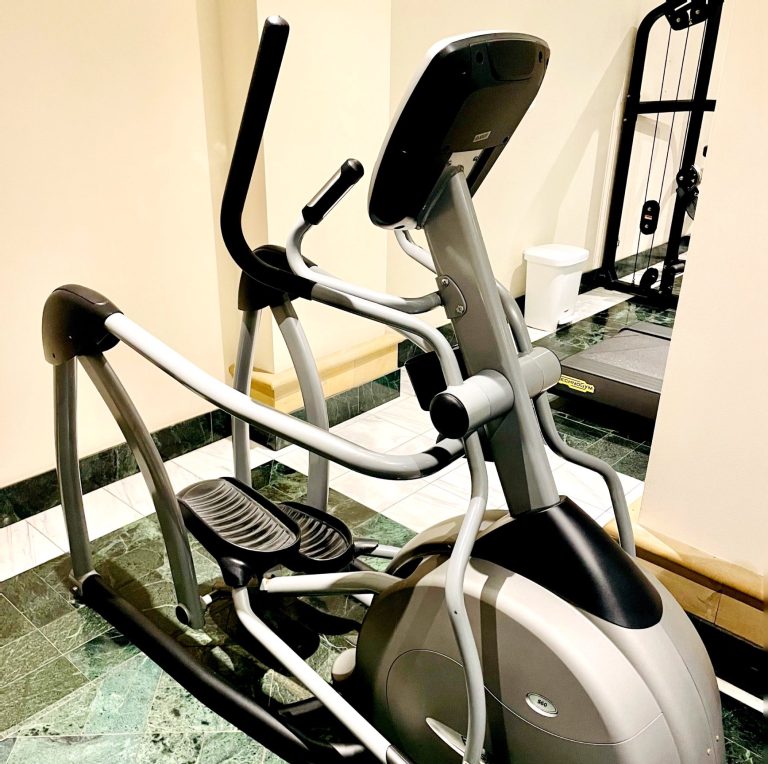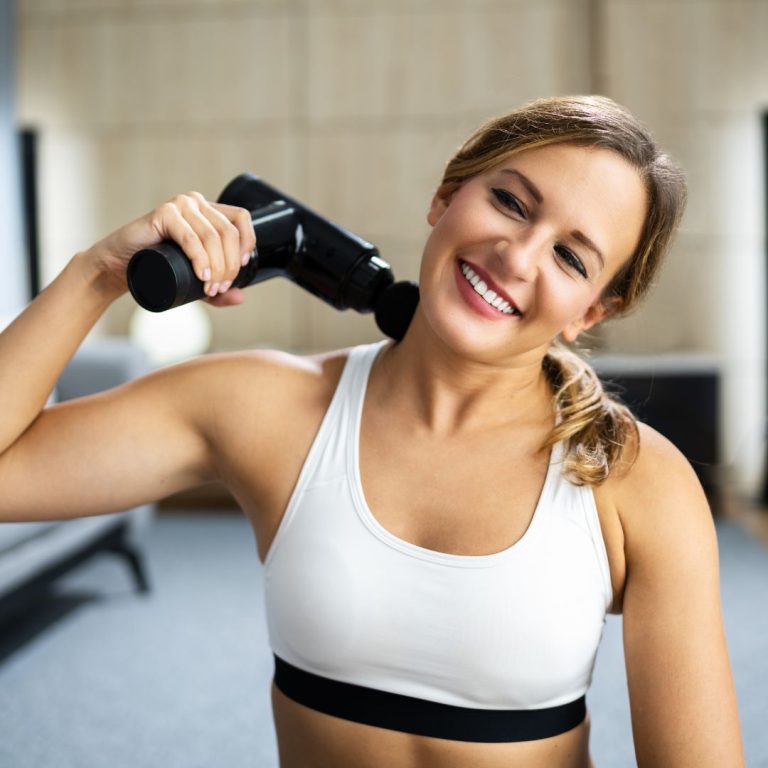How To Do Squats On Angled Smith Machine? [Mistakes to Avoid]

When it comes to leg day, squats are one of the best ways to exercise and target multiple muscle groups and build lower body strength.
If you have access to an angled Smith machine, you have a unique opportunity to enhance your squatting routine.
In this article, we’ll guide you through the proper technique and form for squats on an angled Smith machine, while highlighting common mistakes to avoid. Let’s dive in!
Understanding the Angled Smith Machine
The angled Smith machine is designed to provide a different squatting experience compared to a regular Smith machine. While both machines use a guided barbell that slides on a vertical track, the angled Smith machine offers a tilted barbell path. This variation places greater emphasis on the quadriceps and glute muscles.
Unlike the regular Smith machine, the angled version allows for a more natural squatting pattern, simulating the motion of a traditional barbell squat. This can be beneficial for those who struggle with mobility or find it challenging to perform squats comfortably on a regular Smith machine.
Proper Form and Technique for Squats on Angled Smith Machine
Performing squats with the correct form is crucial to maximize results and avoid injuries. Here’s a checklist to ensure your technique is on point:
- Stand with your feet shoulder-width apart, toes slightly pointing outward.
- Grip the barbell with an overhand grip, hands slightly wider than shoulder-width apart.
- Position the barbell on your upper back, resting it comfortable across your traps.
- Engage your core muscles as you descend into the squat position, bending your knees and pushing your hips back.
- Lower your body until your thighs are parallel to the ground.
- Drive through your heels and extend your legs to return to the starting position.
Remember to maintain an upright posture throughout the movement, keeping your chest lifted and avoiding excessive forward lean. It’s also important to breathe properly during each repetition, inhaling as you lower down and exhaling as you push back up.
Now that we’ve covered the basics of squat form, let’s delve into some common mistakes to watch out for:
Mistake #1: Allowing the Knees to Cave Inward
When squatting, it’s vital to keep your knees in proper alignment with your toes. Allowing your knees to cave inward places unnecessary stress on the joints and increases the risk of injury. Focus on pushing your knees outwards throughout the squat, ensuring they track in line with your toes.
Mistake #2: Half or Partial Squats
Avoid the temptation to cut your squats short by performing partial or half-reps. These reduce the range of motion and limit the muscle engagement, ultimately hindering your progress. Aim to achieve a full squat, with your thighs parallel to the ground, to maximize the benefits.
Mistake #3: Arching Your Back
Maintaining a neutral spine position is crucial during squats. Avoid arching your back excessively, as it can strain your lower back and put you at risk of injury. Engage your core muscles to stabilize your spine throughout the movement, keeping your back straight and avoiding excessive curving.
Adjusting the Machine for Optimal Squatting Positions
Every individual has unique body proportions and requirements. Adjusting the angled Smith machine to suit your needs plays a crucial role in achieving optimal squatting positions. Here’s what you should focus on:
Angle Adjustment
When using an angled Smith machine, you have the flexibility to adjust the degree of the tilt. If you’re a beginner or working on improving your mobility, a lower angle might be more suitable. On the other hand, those looking for an increased challenge can opt for a steeper angle. Experiment with different angles to find the position that feels most comfortable and effective for your squats.
Safety Catch and Bar Position
Ensure the safety catches are appropriately set to catch the barbell in the event of a failed rep. Adjust the catches to a height that allows you to reach full squat depth while still providing a safety net. The barbell should rest comfortably across your traps, allowing for a stable and secure grip throughout the exercise.
Foot Placement
Finding the right foot placement is essential for maintaining stability and balance during squats. Experiment with different widths and toe angles to discover what feels most comfortable and allows for a proper squatting motion. Remember, your feet should be firmly planted on the ground throughout the lift.
Warm-up and Safety Precautions
A proper warm-up is essential before engaging in any exercise, particularly squats. Warming up helps prepare your muscles, joints, and cardiovascular system for the workout ahead. Here are some warm-up exercises you can perform before starting your squats:
- Dynamic stretches, such as leg swings and hip circles, to mobilize your joints.
- Bodyweight squats or lunges to activate your leg muscles.
- Glute bridges or foam rolling to target your gluteal muscles.
Additionally, be sure to follow these safety precautions while using the angled Smith machine:
- Start with a light weight and gradually increase the load as you become more comfortable.
- Ensure the area around the machine is clear of obstacles and hazards.
- Use collars to secure the weights on the barbell, preventing any accidental sliding or shifting.
- Always listen to your body and stop if you experience any pain or discomfort.
By following these warm-up exercises and safety precautions, you can ensure a safe and effective squatting session on the angled Smith machine.
Variations and Modifications for Squats on Angled Smith Machine
To add variety and target specific muscle groups, you can incorporate different squat variations on the angled Smith machine. Here are a few to try:
Front Squats
Instead of positioning the barbell on your upper back, hold it in front of you, resting on your shoulders. This variation places greater emphasis on the quadriceps and challenges your core stability.
Pulse Squats
Perform a regular squat motion but add a pulse at the bottom of the movement before driving back up. This helps increase time under tension, providing an extra challenge for your leg muscles.
Bulgarian Split Squats
Place one foot on a raised platform behind you, keeping the front foot on the ground. Perform a squat motion, focusing on the front leg. This unilateral exercise helps improve balance and stability while targeting each leg independently.
As you experiment with different squat variations, make sure to maintain the correct form and technique discussed earlier.
Common Challenges and How to Overcome Them
Performing squats on an angled Smith machine does present some unique challenges. Here are a few common hurdles and ways to overcome them:
Limited Range of Motion
If you find that the tilted barbell path restricts your range of motion, try adjusting the angle slightly to find a more comfortable position. Alternatively, you can focus on improving your mobility through regular stretching exercises and mobility drills.
Mobility and Flexibility Issues
If you have difficulty getting into the proper squatting position due to mobility or flexibility limitations, consider incorporating specific exercises to address these issues. Hip mobility exercises, ankle mobility drills, and foam rolling can help enhance your squatting ability over time.
Balance and Stability
Squats on an angled Smith machine require increased focus on balance and stability. If you struggle with these aspects, start by using lower weights and gradually increase as you gain confidence. Additionally, performing unilateral exercises, like Bulgarian split squats, can help improve balance and stability.
Conclusion
When performing squats on an angled Smith machine, proper form and technique are key to achieving optimal results and avoiding injuries. By following the guidelines outlined in this article, you can ensure a safe and effective squatting session. Remember to adjust the machine for your specific needs, warm up adequately, and continue challenging yourself with variations and modifications. With consistent practice, proper form, and dedication, you’ll be well on your way to building lower body strength and achieving your fitness goals.




![How To Cancel Orangetheory [A Guide to Smooth Membership Cancellation]](https://149924277.v2.pressablecdn.com/wp-content/uploads/2023/06/Cancelling-Orangetheory-768x768.jpg)
